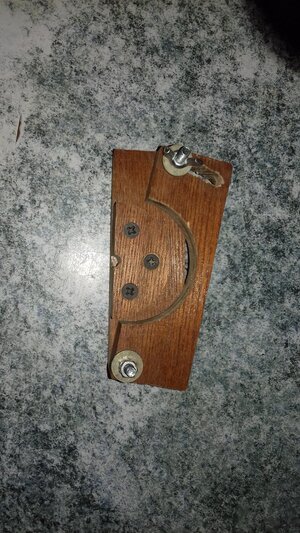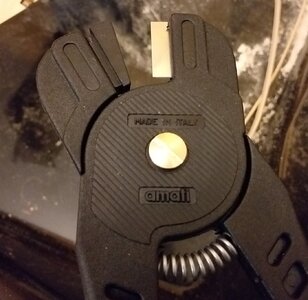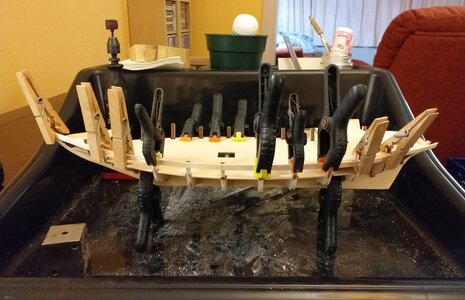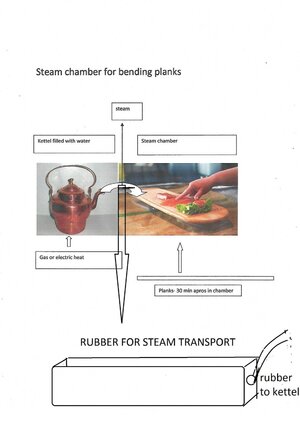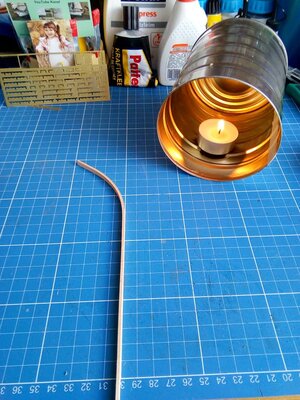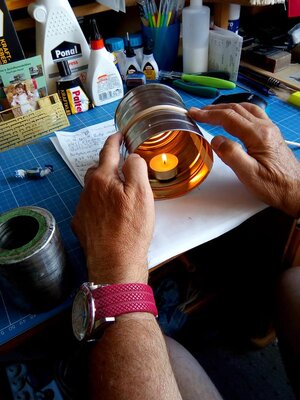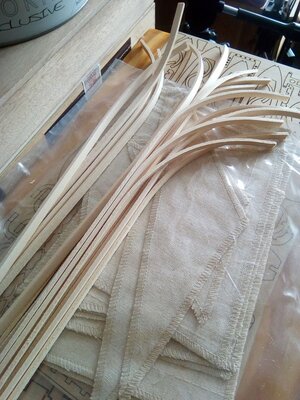Stuglo above says the blade is reversible. I will check that out! Of course this puts me back at the bottom of the learning curve, but so what. It is very sharp. In fact, I relegated it to duty as a plank snipper. Works great in that role. But I'd rather have a dry bending tool. Thanks all.Ah...I think I understand the problem...the blade in my Amati plank bender tool is fairly dull...not sharp. Thus when I create a dimple the indent is not a “cut” but more of a compression of the wood fibers. It is this compression that forces the plank to curve. Try dulling the blade even more so when you apply pressure it does not cut the wood but compresses the wood into a shallow dimple. My apologies for not picking up on this. I hope this works out because I use my tool all the time with very good results.
Last edited:




 Also, if you don't want to wait for them to air dry, you can hit them with a heat gun or hair dryer to speed things up. But I rather let them air dry and work on something else as we all know how monotonous planking can get.
Also, if you don't want to wait for them to air dry, you can hit them with a heat gun or hair dryer to speed things up. But I rather let them air dry and work on something else as we all know how monotonous planking can get.
